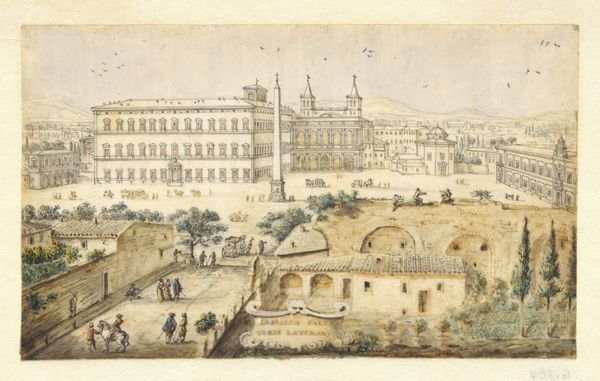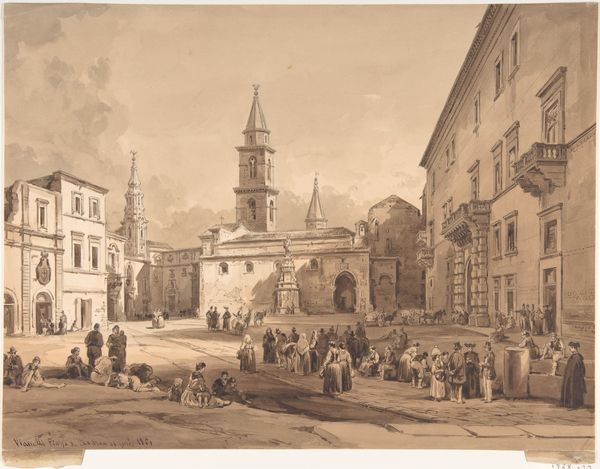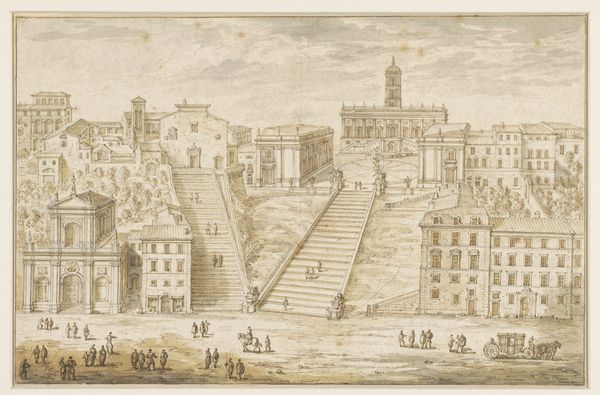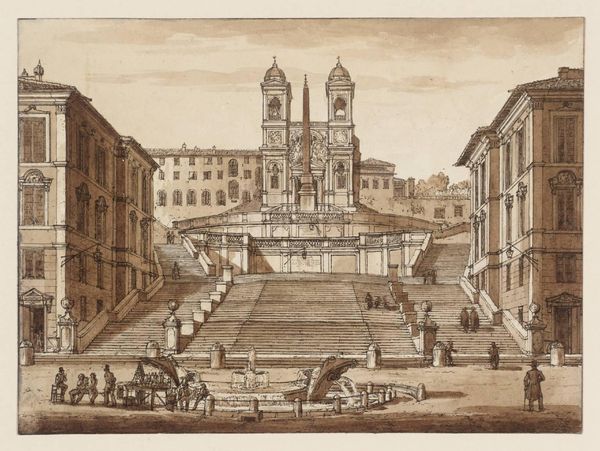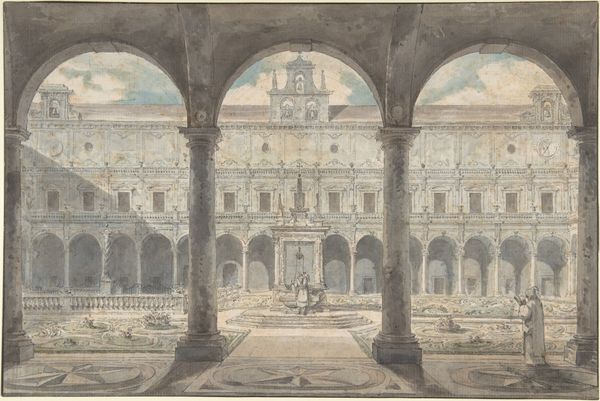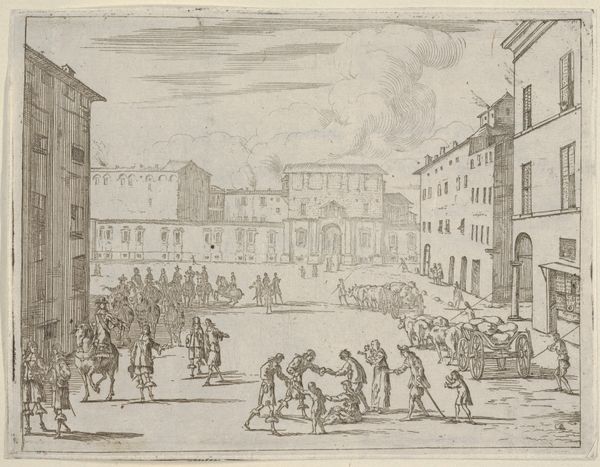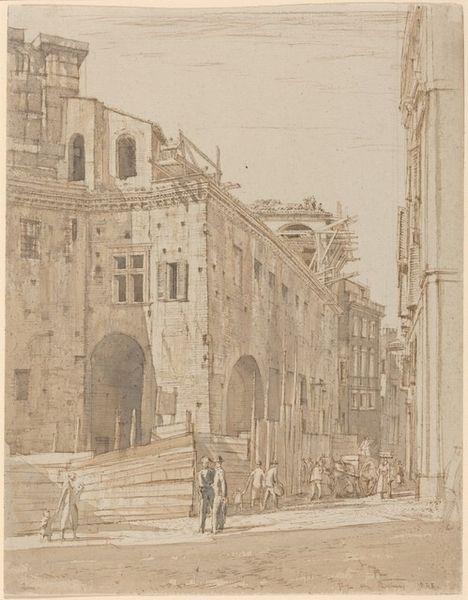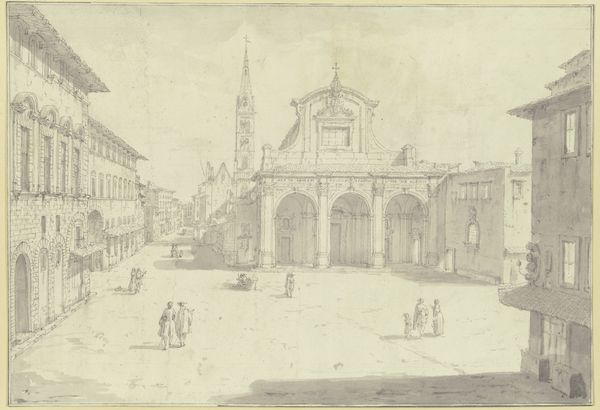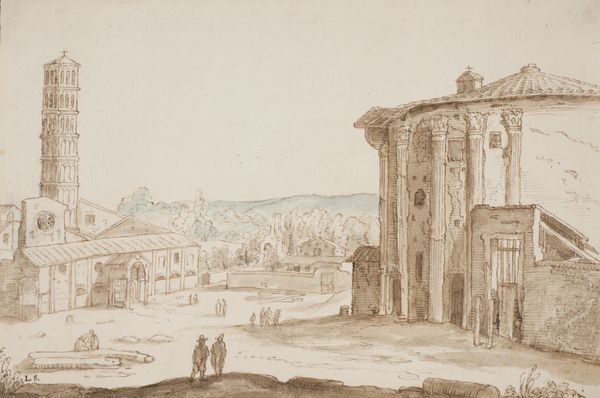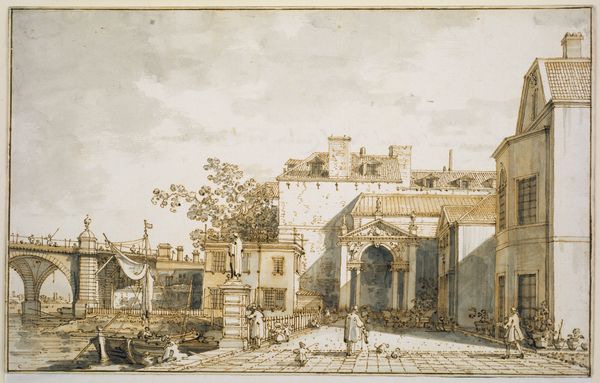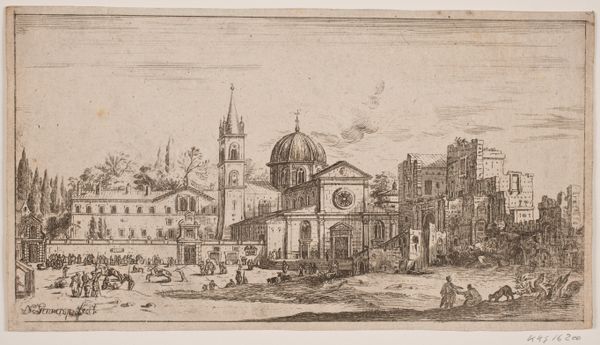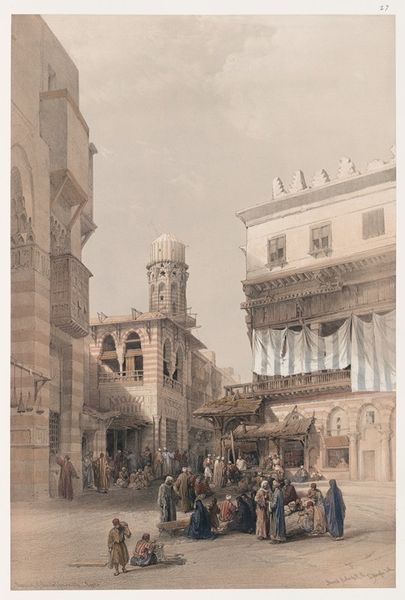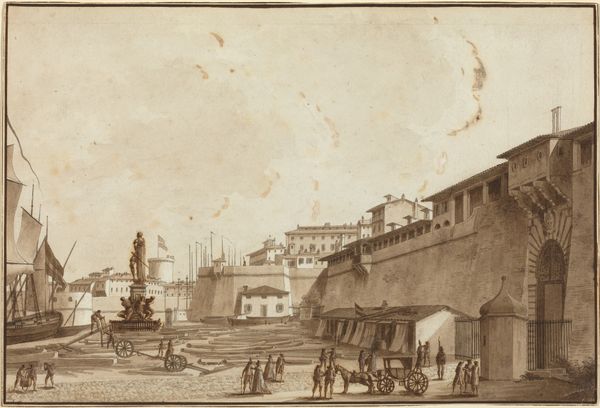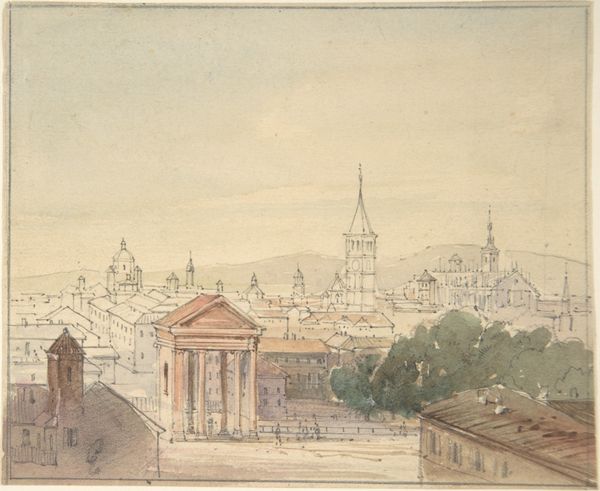
drawing, print, watercolor
#
drawing
#
baroque
# print
#
human-figures
#
landscape
#
figuration
#
watercolor
#
cityscape
#
watercolour illustration
#
genre-painting
#
watercolor
#
building
Dimensions: 13-11/16 x 11-9/16 in. (34.8 x 29.3 cm)
Copyright: Public Domain
Curator: Here we have Giovanni Paolo Panini's "Scalinata della Trinità dei Monti," a watercolor illustration dating from 1740 to 1770. It depicts the famous Spanish Steps in Rome, now residing at The Metropolitan Museum of Art. Editor: It’s incredible! I’m immediately drawn to the subtle washes of color, creating a sense of diffused light. The composition, with the strong verticality of the steps against the horizontal spread, is brilliantly balanced. Curator: Panini was fascinated by the theatre of urban life and its relationship to monuments, especially their role in shaping civic identity and displaying power. The Spanish Steps, in his view, embody this intersection of spectacle and sociability. Editor: Yes, and the formal rendering enhances that. The repetition of lines in the staircase emphasizes depth. The buildings on either side almost frame the scene, pulling the viewer into the heart of Roman life. Did you also notice the figures? Curator: Absolutely, the carefully positioned human-figures aren't merely decorative. Their placement indicates the hierarchy and flow of Roman society at the time, displaying who could ascend and descend. The steps effectively operate as a social stage. Editor: I'm intrigued by Panini’s use of watercolor. The delicacy is surprising, almost understated for such a grand architectural subject. Curator: He strategically used it to underscore the fleeting nature of Roman life – it’s an illusion of permanence underscored by his wispy technique and limited hues, implying that power and architectural prestige may likewise be ephemeral. Editor: I agree, even the palette, tending toward greys and muted tones, speaks to a deeper, almost melancholic mood despite the bustling activity portrayed. Curator: Which, in a historical context, perhaps indicates the unease around changes coming about in the pontifical kingdom. This piece marks how public spaces function, or, perhaps more accurately, are meant to function in the sociopolitical sphere. Editor: Looking closely at how line and color create spatial recession and volume, the composition really shines with a soft luminosity. Panini coveys both architectural solidity and lightness, as though the image is rising above the tangible. Curator: Indeed. I see this not just as a landscape but as an important record that gives tangible evidence to the shifting dynamics of social spaces of Rome during that transformative period. Editor: A great synthesis. It reveals that timeless aspect through considered technique and composition.
Comments
No comments
Be the first to comment and join the conversation on the ultimate creative platform.
